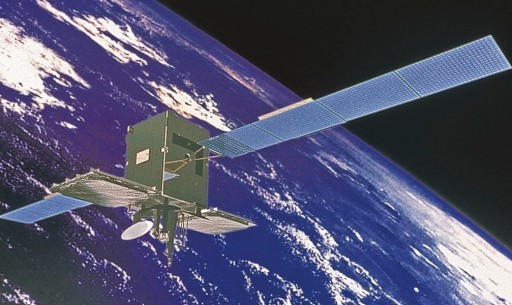Sicral-2 / Syracuse 3C

The Sicral-2 / Syracuse 3C satellite is part of a joint military satellite communications program of Italy and France with the goal of adding capabilities in operational Ultra High and Super High Frequency communications, expanding the services provided by the Italian Sicral 1 and 1B (launched 2001 & 2009) and the French Syracuse program that was inaugurated in 1984 and so far saw nine launches in three satellite generations, the most recent entering orbit in 2006.
The satellite was built by Thales Alenia Space and Telespazio under a €295 Million contract. Sicral 2 will support communications for the armed forces of Italy and France to meet the needs expected for the near future. The satellite will deliver an architecture for strategic and tactical communications in domestic military/government operations as well as operations on foreign soil. The comm payload supports terrestrial, naval and aerial platforms that are connected in a single integrated network.
Sicral 2 is also intended to provide a backup to the current Sicral/Syracuse satellites for NATO communications, having the ability to be integrated into a communications architecture of allied nations.
Under the contract signed in May 2010, Thales Alenia Space is responsible for the development of the communications payload, the manufacture of the satellite bus and its integration with the payload – there is a segragation between Thales Alenia Italia and Thales Alenia France with the Italian side providing the UHF/SHF payload flying under the Sicral designation and the French side supplying the platform and the Syracuse SHF payload plus the Mission Control Center located in France. Telespazio is responsible for the satellite ground system and the launch and early orbit phase of the mission, putting the satellite through deployments, apogee maneuvers and checkouts before handover to its operators.
The Sicral 2 satellite is based on the Spacebus-4000 B3 satellite platform, part of the Spacebus-3000/4000 series that covers a range of satellite masses and payload accommodations. The bus can support up to 7kW of payload power and uses a new avionics system with a 100-Volt power bus.
Spacebus dates back to 1985 when the first Aérospatiale-built Spacebus satellite, flying under the Spacebus 100 designation, was launched. Over the years, the capabilities of the satellites were expanded owed to more and more powerful launch vehicles becoming available, allowing transponders and equipment to be added to the satellites. Going through constant stages of modernization, Spacebus evolved into its 3000 and later the 4000 series which feature the same basic structure but different avionics systems.
Spacebus 4000 uses a modular approach, with separate construction of the satellite platform and payloads for integration late in the manufacturing process. Sicral-2 / Syracuse 3C is 5.5 by 2.2 by 3.1 meters in size when in its launch configuration, weighing 4,400 Kilograms at liftoff.
The satellite platform consists of carbon fiber with a composite honeycomb structure making up a central thrust structure facilitating the propellant tanks and a series of internal and external panels facilitating the various systems such as payloads, avionics modules and radiators.
The 4000 series features upgraded avionics, transitioning from a 50-Volt power bus to a system running at 100 Volts. Also, a new integrated onboard computer with a higher flexibility than previous versions was added and the satellite bus employs star trackers specifically designed for use in Geostationary Orbit to provide excellent pointing data for attitude control. A chemical propulsion system is used for apogee-raising and stationkeeping in Geostationary Orbit for a minimum service life of 15 years.
Details on the capabilities of the UHF/SHF payload of the satellite are not known publicly. Sicral-2 / Syracuse 3C will be stationed at 37 degrees East in Geostationary Orbit, overlooking the entire European continent.
